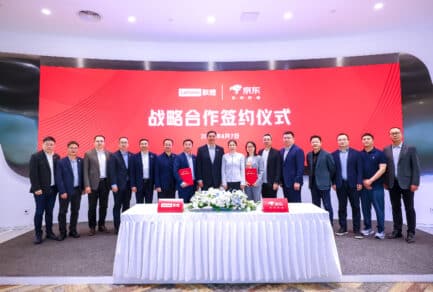Mar 15, 2021|
Two Thirds of Customers Prefer Omnichannel Approach for Electric Appliances
by Kelly Dawson
Two thirds of consumers prefer a combination of online and offline methods when purchasing electric appliances, according to the 2021 Electric Appliance Consumption Satisfaction Report released on Mar. 13 by market research firm Digital 100. Among customers who purchase electric appliances, JD.com leads the field based on its commitment to 100% authentic products and an advanced omnichannel approach, both essential for consumer satisfaction when it comes to big-ticket purchases like electric appliances.
According to the report, 17% of customers prefer to first view and test the product in an offline store, before eventually purchasing online—which allows for further research and comparison before making a final decision; and 22% do online research first to select potential products of interest, and then visit an offline store to test the product in person, before eventually purchasing the product online. Customers can also choose whether they prefer to pick up a purchase at an offline store, or have it delivered directly to their homes, providing additional options for convenience and peace of mind.
As customers’ needs evolve, JD’s recognition of the need for online-offline integration will be the key to future success, said David Roth, chairman of BrandZ and CEO of The Store WPP EMEA and Asia. “JD is one of the leaders in understanding this strategic challenge.”
JD’s omnichannel approach extends across multiple categories and industries, with its over 12,000 offline home appliance experience stores across China serving as a clear example of how offline stores can add value for consumers.
Visitors to JD E-Space, JD’s 50,000 square-meter experience store in Chongqing, have free rein to try anything in the store. Customers debating between washing machines are encouraged to take them for a ‘spin’; participate in baking tutorials, and more.
The company plans to open 20 JD E-Space experience stores in first-tier cities across China by 2025. These offline stores play an important role in the company’s expansion into lower-tier markets, where customers are still acclimating to online shopping. Customers can also access post-sales services at the offline stores.
JD’s omnichannel strategy has also been a key factor in ensuring ever faster delivery. While the traditional retail model (still prevalent in many countries including the US) relies on a few major warehouses, JD’s extensive network of offline stores combined with advanced logistics have drastically shortened delivery time to consumers.
JD Retail CEO Lei Xu has said that omnichannel will remain a key strategy for the company.
“The significance of JD’s omnichannel strategy is to improve overall retail efficiency in a wider range of new formats and scenarios, meet consumers’ diversified and instant purchases of goods and services, and create value for merchants and consumers. We believe that the penetration rate of omnichannel and instant consumption models in different industries will continue to increase in the future. The industry space is huge.”



 Photo Gallery: This Week at JD (Mar. 8 – Mar. 12)
Photo Gallery: This Week at JD (Mar. 8 – Mar. 12)



